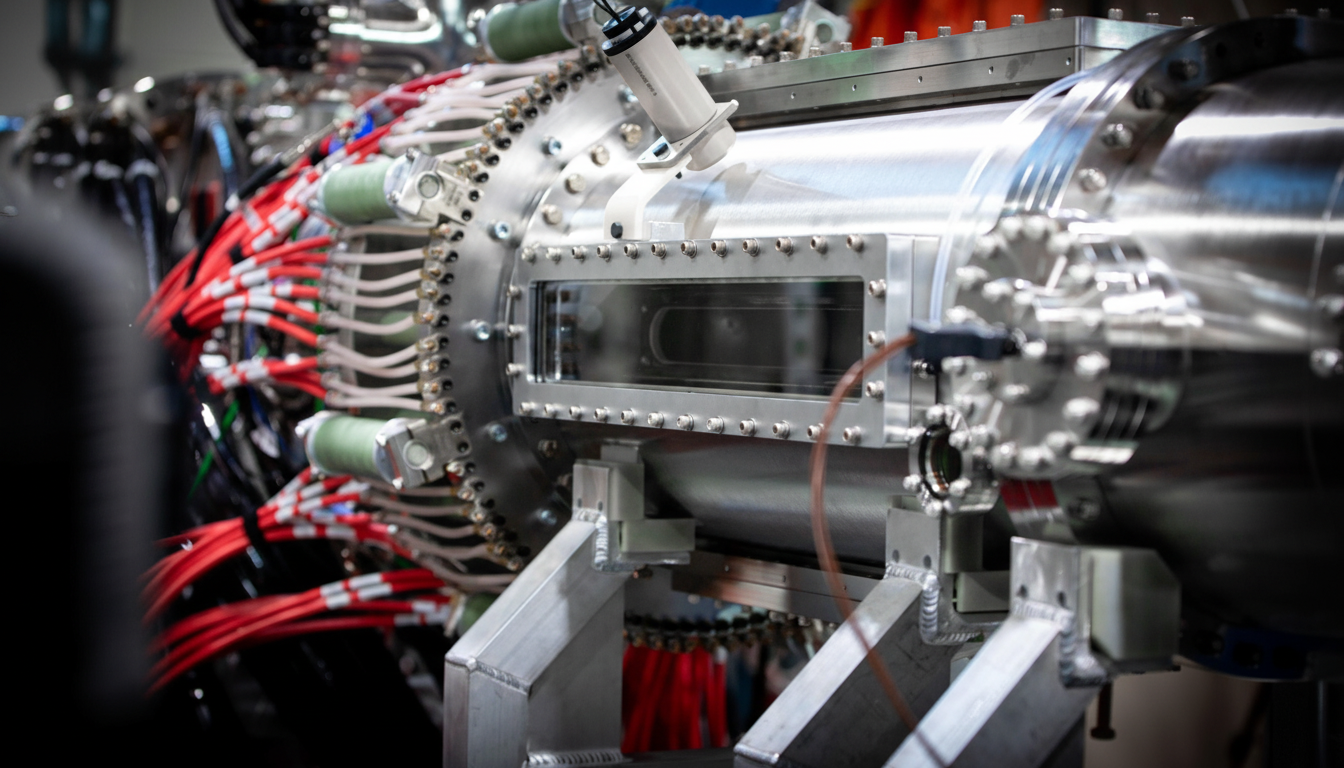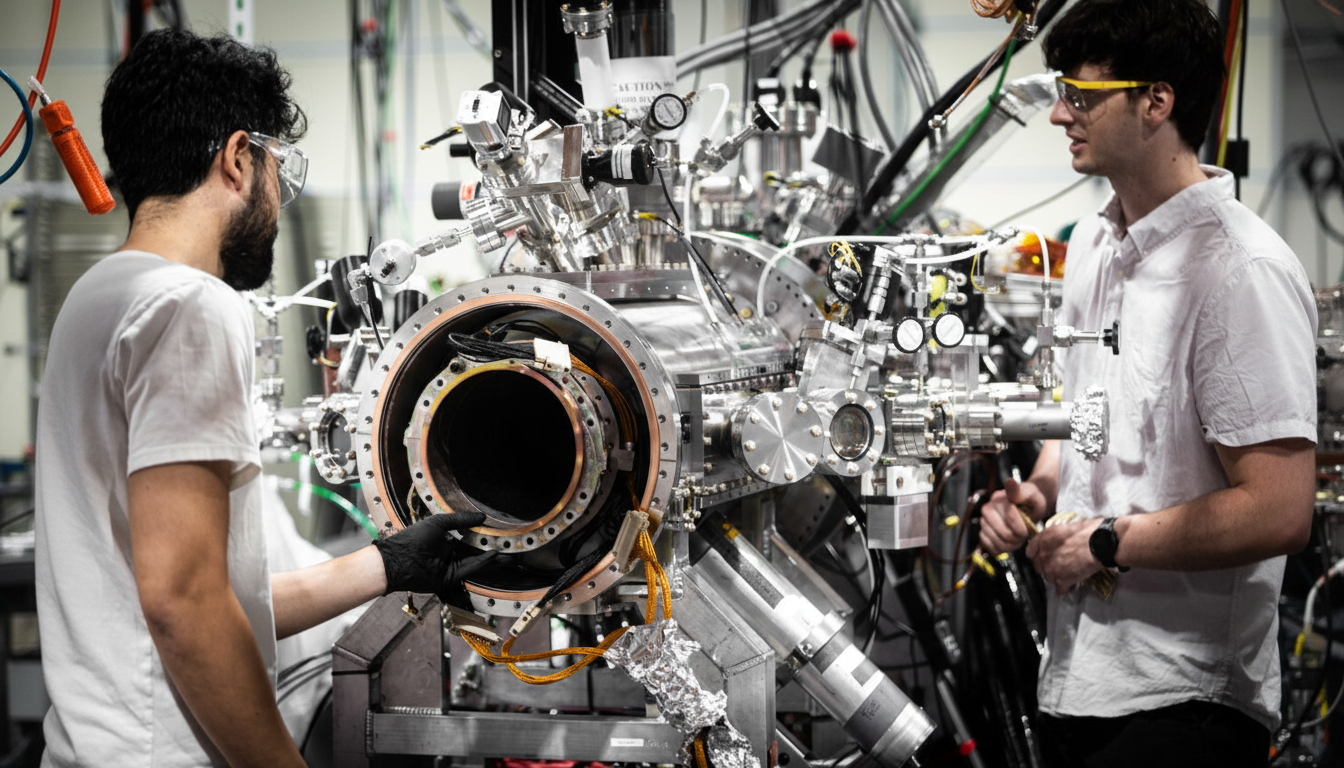Zap Energy has announced new results from tests on its newest fusion device, showing record plasma pressures for the company’s approach and a significant increase in temperature, milestones it says further prove the physics its compact Z-pinch design is based upon. The Fuze-3 device, which now pulses regularly at the Zap facility near Seattle, compressed plasma to greater than 232,000 pounds-force per square inch (about 1.6 gigapascals) and heated it up to more than 21 million degrees F (11.7 million degrees C), data from a research meeting in Long Beach, California show.
While the numbers don’t directly relate to tokamaks or laser-based systems, they represent a record for a sheared-flow-stabilized Z-pinch—meaning Zap has budded off in its own direction if it hopes to start selling stations capable of sending energy to the grid sometime in the early ’30s. Fuze-3 results are being fed back into the company’s design work for next-generation demo systems, according to the firm.

Why More Pressure Is the Point for Fusion Gains
The performance of a fusion device ultimately depends on this “triple product” – temperature, density (which is related to pressure), and confinement time. Push one of those up and the others can relax. That’s why many programs, including Zap’s, are leaning into pressure: at crazy high pressures, the plasma doesn’t have to be held stable so long to produce net energy. The report of 1.6 GPa from Zap corresponds to something like 16,000 times atmospheric pressure, an intensity right in the neighborhood where deuterium-tritium plasmas might, in theory, reach the breakeven level if other conditions hold up.
The firm’s Z-pinch approach runs a powerful current directly through the plasma. The current creates a magnetic field which, by compressing the plasma from outside, heats and concentrates it. Z-pinches historically have been plagued by magnetohydrodynamic instabilities — think “kink” and “sausage” modes — that rip the plasma as it races toward fusion. Zap’s secret weapon is sheared-flow stabilization: manipulating the velocity gradients in the plasma so that they help damp those instabilities, long enough to reach useful conditions.
Inside the Fuze-3 Upgrade and Drive Modifications
To increase pressure, Zap modified the existing drive on Fuze-3 by adding a third electrode and transitioning from single-energy pulse to double-pulse delivery. In practice, that means the device tailors the current waveform not only to maximize heating but also compression of it within microseconds rather than just ramming harder with some brute-force pulse. The result: higher peak pressure without an equal increase in total current, and better stability throughout the key pinch phase.
The chamber hardware looks pretty much the same, but how it operates is not, say Zap’s engineers. The new drive is formulated to enhance the shear-free “pinch” and retain the sheared-flow profile. It’s more of an iteration than a complete reinvention — the sort of step-by-step advance that fusion startups need as they pursue demonstrated, engineering-grade performance.
How It Compares Across Fusion Approaches
Apples-to-apples comparisons in fusion are difficult.
High-field tokamaks like Commonwealth Fusion Systems’ SPARC focus on deep magnetic confinement, which is enabled by rare-earth high-temperature superconductor (RE-HTS) magnets.

Stellarators, such as Germany’s Wendelstein 7-X, aim for extremely stable steady-state plasmas via complex magnetic configuration.
In a different effort, the U.S. Department of Energy’s National Ignition Facility, using laser-driven implosions, has now reached scientific breakeven, using lasers to compress fuel capsules, if only for nanoseconds rather than sustained run times.
Zap’s approach is different: a pulsed, compact machine that’s after high pressure and good confinement in rapid-fire bursts. By the company’s own accounting, pressure still has to be ratcheted up by about a factor of 10 for it to reach its scientific breakeven on its platform — a goal which at this point only NIF has reported that it can accomplish. Zap also claims its latest data are driving it toward an intermediate performance benchmark frequently discussed by officials at Commonwealth Fusion Systems, indicating that “on-path” physics goals are aligning across different concepts even if the machines look nothing like each other.
What Comes Next for Zap Energy and Fuze-3 Progress
Zap wants to bring its next-gen Fuze device online this winter, with diagnostics designed to confirm pressure gains and energy balance in finer detail.
The short-term road map involves plans to improve pulse-to-pulse repeatability, bump up shot rates and dial in fuel handling—steps that matter as much to a future power plant as pure peak performance.
Outside the physics, the picture for commercialization is brightening. The Nuclear Regulatory Commission here in the United States has developed a bespoke regulatory structure for fusion facilities, and private investment is going up and down Gandhian mountainsides across the sector, with seed money being poured into Z-pinch, tokamak, and magnetized target configurations. Should Zap be able to transform Fuze-3’s pressure advances into a self-supporting campaign of engineering progress—higher repetition, better wall-plug efficiency, strong components—its cheapskate take on the problem might serve as a lower-cost modular choice over magnet-heavy larger systems.
For now, the headline is straightforward: more force, more frequently, and with fewer instabilities. In fusion, that is the sort of thing that adds up.

